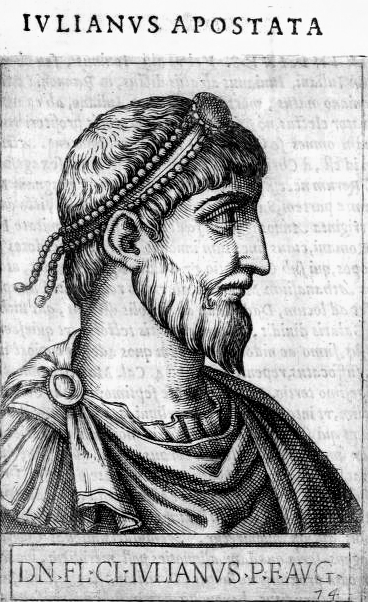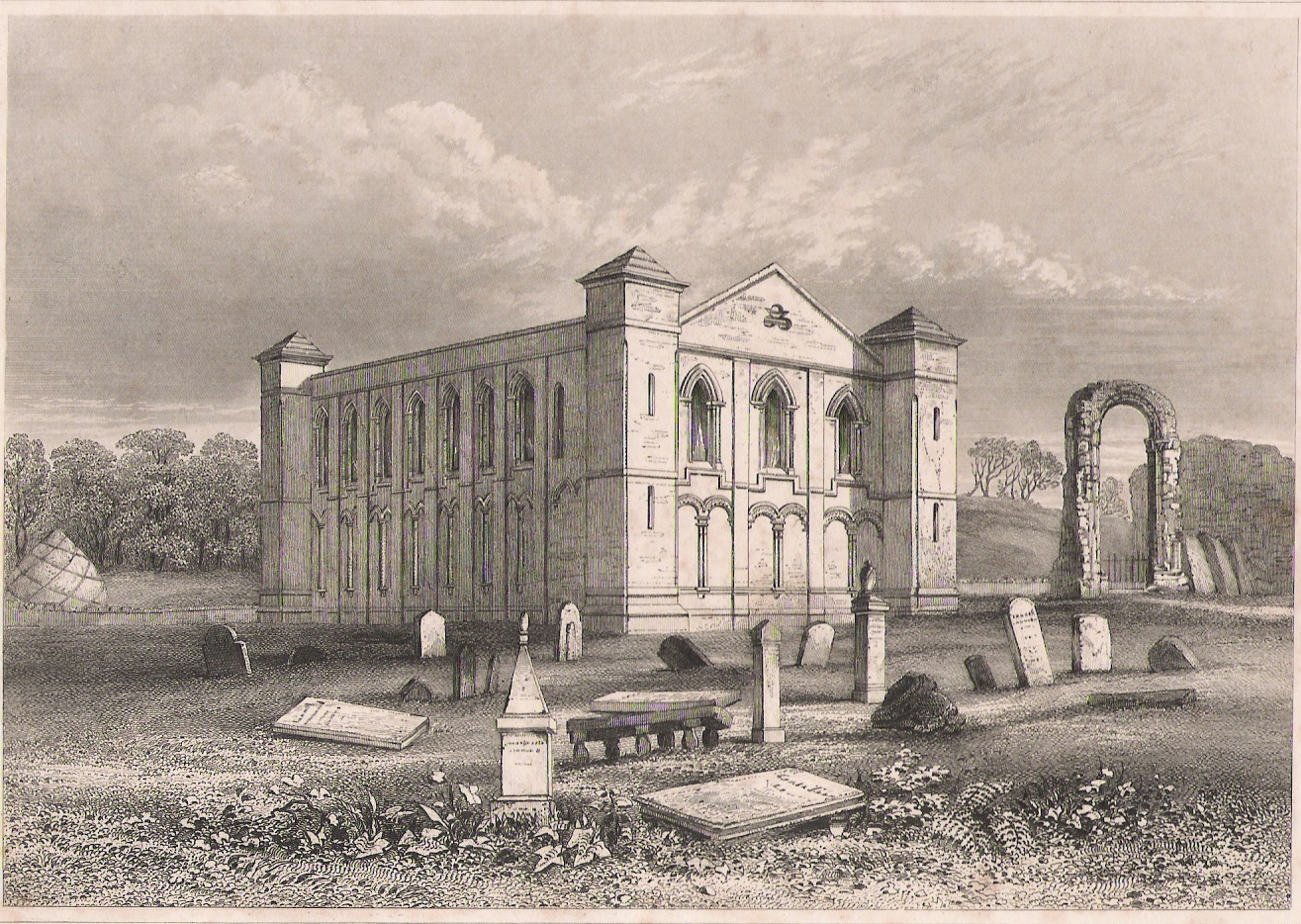|
Æbbe The Younger
Saint Æbbe of Coldingham (also Ebbe, Aebbe, Abb), also known as Æbbe the Younger, (died 2 April 870) was an Abbess of Coldingham Priory in south-east Scotland. Like many of her fellow female saints of Anglo-Saxon England, little is known about her life. She presided over the Benedictine Abbey at Coldingham Coldingham is a village and parish in Berwickshire in the Scottish Borders. It lies a short distance inland from Coldingham Bay, three miles northeast of the fishing village of Eyemouth. Parish The parish lies in the east of the Lammermuir .... She is best known for an act of self-mutilation to avoid rape by Viking invaders: according to a thirteenth-century chronicle, she took a razor and cut off her nose in front of the nuns, who followed her example. Their appearance so disgusted the invaders that the women were saved from rape but not from death, as the Danes soon returned and set fire to the convent, killing Æbbe and her entire community. References Ex ... [...More Info...] [...Related Items...] OR: [Wikipedia] [Google] [Baidu] |
Giovanni Battista De'Cavalieri
Giovanni Battista de' Cavalieri (1526–1597), an Italian engraver, was born at Villa Lagarina and died at Rome. His style of engraving resembles that of Enea Vico. Many of his plates are copies after the great Italian masters; they are etched, and finished with the graver. He was very laborious, and his plates number nearly 380. The following are those most worthy of notice. *The Frontispiece, and Heads of the Popes, for the ''Vite de' Pontifici''. *Thirty-three plates of the ''Ruins of Rome''; after Dossio. 1579. *Fifty-eight plates of the Ancient statues of Rome ''Antiquarum statuarum urbis Romae''. 1561 *A series of plates entitled ''Beati Apollinaris Martyris primi Ravennatum episcopi Res gestae''; after N. Circignani. 1586. *''Ecclesiae Anglicanae Trophae''; after the same. *''Christ among the Doctors''; supposed to be from his own design. *''The Last Supper''; the same. *''The Image of the Virgin of Loreto''. 1566. *''The House of Loreto, and the Miracles wrought there ... [...More Info...] [...Related Items...] OR: [Wikipedia] [Google] [Baidu] |
Niccolò Circignani
Niccolò Circignani (c. 1517/1524 – after 1596) was an Italian painter of the late-Renaissance or Mannerism, Mannerist period. Biography Born in Pomarance, he is one of three Italian painters called Pomarancio (other), Pomarancio. His first works are documented from the 1560s, where he painted frescos on the Old Testament stories for the Holy See, Vatican Cortile del Belvedere, Belvedere, where he may have worked alongside Santi di Tito and Giovanni de' Vecchi. He also completed altarpieces for Orvieto (1570), Umbertide (1572), CittĂ di Castello (1573–1577) as well as CittĂ della Pieve. He worked at Orvieto Cathedral with Hendrick van den Broeck, a brother of the sculptor Willem van den Broecke and a relative of the painter Chrispijn van den Broeck. He painted frescoes (1568) in the church of the ''MaestĂ delle Volte'' in Perugia, the ''Resurrection'' (1569 in Panicale) and an ''Annunciation'' (1577, now in the Pinacoteca Comunale, CittĂ di Castello). He p ... [...More Info...] [...Related Items...] OR: [Wikipedia] [Google] [Baidu] |
Venerable English College, Rome
The Venerable English College (), commonly referred to as the English College, is a Catholic seminary in Rome, Italy, for the training of priests for England and Wales. It was founded in 1579 by William Allen on the model of the English College, Douai. The current Rector is the Rev. Stephen Wang from the Diocese of Westminster. History St Thomas' Hospice (1362–1579) The English Hospice of the Most Holy Trinity and St Thomas was founded in the Regola quarter of Rome in 1362 when the English community in Rome purchased a house from the rosary sellers John and Alice Shephard. The Jubilee Year of 1350, which had seen the influx of over a million pilgrims anxious to gain the Plenary Indulgence offered by Pope Clement VI, had exposed the notorious shortcomings of accommodation in the Eternal City. English pilgrims had paid extortionate prices to stay in damp and filthy hostels far from St Peter's Basilica and the Holy Door through which they had come to pass. Innkeepers gave room ... [...More Info...] [...Related Items...] OR: [Wikipedia] [Google] [Baidu] |
Coldingham Monastery
Coldingham Priory was a house of Benedictine monks. It lies on the south-east coast of Scotland, in the village of Coldingham, Berwickshire. Coldingham Priory was founded in the reign of David I of Scotland, although his older brother and predecessor King Edgar of Scotland had granted the land of Coldingham to the Church of Durham in 1098, and a church was constructed by him and presented in 1100. The first prior of Coldingham is on record by the year 1147, although it is likely that the foundation was much earlier. The earlier monastery at Coldingham was founded by St Æbbe sometime c. AD 640. Although the monastery was largely destroyed by Oliver Cromwell in 1650, some remains of the priory exist, the choir of which forms the present parish church of Coldingham and is serviced by the Church of Scotland. Early Middle Ages St Æbbe the Elder Early life Æbbe was born c. AD 615 into both royal houses of Northumbria, the daughter of King Æthelfrith of Bernicia, (the first kin ... [...More Info...] [...Related Items...] OR: [Wikipedia] [Google] [Baidu] |
Scotland
Scotland is a Countries of the United Kingdom, country that is part of the United Kingdom. It contains nearly one-third of the United Kingdom's land area, consisting of the northern part of the island of Great Britain and more than 790 adjacent Islands of Scotland, islands, principally in the archipelagos of the Hebrides and the Northern Isles. To the south-east, Scotland has its Anglo-Scottish border, only land border, which is long and shared with England; the country is surrounded by the Atlantic Ocean to the north and west, the North Sea to the north-east and east, and the Irish Sea to the south. The population in 2022 was 5,439,842. Edinburgh is the capital and Glasgow is the most populous of the cities of Scotland. The Kingdom of Scotland emerged as an independent sovereign state in the 9th century. In 1603, James VI succeeded to the thrones of Kingdom of England, England and Kingdom of Ireland, Ireland, forming a personal union of the Union of the Crowns, three kingdo ... [...More Info...] [...Related Items...] OR: [Wikipedia] [Google] [Baidu] |
Abbess
An abbess (Latin: ''abbatissa'') is the female superior of a community of nuns in an abbey. Description In the Catholic Church (both the Latin Church and Eastern Catholic), Eastern Orthodox, Coptic, Lutheran and Anglican abbeys, the mode of election, position, rights, and authority of an abbess correspond generally with those of an abbot. She must be at least 40 years old and have been a nun for 10 years. The age requirement in the Catholic Church has evolved over time, ranging from 30 to 60. The requirement of 10 years as a nun is only eight in Catholicism. In the rare case of there not being a nun with the qualifications, the requirements may be lowered to 30 years of age and five of those in an "upright manner", as determined by the superior. A woman who is of illegitimate birth, is not a virgin, has undergone non-salutory public penance, is a widow, or is blind or deaf, is typically disqualified for the position, saving by permission of the Holy See. The office is e ... [...More Info...] [...Related Items...] OR: [Wikipedia] [Google] [Baidu] |
Coldingham Priory
Coldingham Priory was a house of Benedictine monks. It lies on the south-east coast of Scotland, in the village of Coldingham, Berwickshire. Coldingham Priory was founded in the reign of David I of Scotland, although his older brother and predecessor King Edgar of Scotland had granted the land of Coldingham to the Church of Durham in 1098, and a church was constructed by him and presented in 1100. The first prior of Coldingham is on record by the year 1147, although it is likely that the foundation was much earlier. The earlier monastery at Coldingham was founded by St Æbbe sometime c. AD 640. Although the monastery was largely destroyed by Oliver Cromwell in 1650, some remains of the priory exist, the choir of which forms the present parish church of Coldingham and is serviced by the Church of Scotland. Early Middle Ages St Æbbe the Elder Early life Æbbe was born c. AD 615 into both royal houses of Northumbria, the daughter of King Æthelfrith of Bernicia, (the first k ... [...More Info...] [...Related Items...] OR: [Wikipedia] [Google] [Baidu] |
Anglo-Saxon
The Anglo-Saxons, in some contexts simply called Saxons or the English, were a Cultural identity, cultural group who spoke Old English and inhabited much of what is now England and south-eastern Scotland in the Early Middle Ages. They traced their origins to Germanic peoples, Germanic settlers who became one of the most important cultural groups in Britain by the 5th century. The Anglo-Saxon period in Britain is considered to have started by about 450 and ended in 1066, with the Norman conquest of England, Norman Conquest. Although the details of Anglo-Saxon settlement of Britain, their early settlement and History of Anglo-Saxon England, political development are not clear, by the 8th century an Anglo-Saxon cultural identity which was generally called had developed out of the interaction of these settlers with the existing Romano-British culture. By 1066, most of the people of what is now England spoke Old English, and were considered English. Viking and Norman invasions chang ... [...More Info...] [...Related Items...] OR: [Wikipedia] [Google] [Baidu] |
Rhinotomy
Rhinotomy is mutilation, usually amputation, of the Human nose, nose. It was a means of judicial punishment throughout the world, particularly for sexual transgressions, but in the case of adultery often applied only to women. Ancient usage The Code of Hammurabi contains references to amputation of bodily protrusions (such as lips, nose, breasts, etc.), as do the laws of History of ancient Egypt, ancient Egypt, and in Hindu medicine the writings of Charaka and the Sushruta Samhita. Ancient Egyptian pharaoh, Horemheb, authored a legal text, the Edict of Horemheb, which frequently stated rhinotomy as a criminal punishment. Rhinotomy as a punishment for adultery was customary in early India, and practised by the Ancient Greece, Greeks and Ancient Rome, Romans, but only rarely; the practice was more prevalent in Byzantine Empire, Byzantium and among the Arabs, where the unfaithful woman was subjected to it while the man could get away with a flogging—and "often the husband whose ... [...More Info...] [...Related Items...] OR: [Wikipedia] [Google] [Baidu] |
Signs (journal)
''Signs: Journal of Women in Culture and Society'' is a peer-reviewed feminist academic journal. It was established in 1975 by Jean W. Sacks, Head of the Journals Division, with Catharine R. Stimpson as its first editor-in-Chief, and is published quarterly by the University of Chicago Press. ''Signs'' publishes essays examining the lives of women, men, and non-binary people around the globe from both historical and contemporary perspectives, as well as theoretical and critical articles addressing processes of gendering, sexualization, and racialization. History and significance The founding of ''Signs'' in 1975 was part of the early development of the field of women's studies, born of the women's liberation movement of the late 1960s and 1970s. The journal had two founding purposes, as stated in the inaugural editorial: (1) "to publish the new scholarship about women" in the U.S. and around the globe, and (2) "to be interdisciplinary." The goal was for readers of the journal ... [...More Info...] [...Related Items...] OR: [Wikipedia] [Google] [Baidu] |




